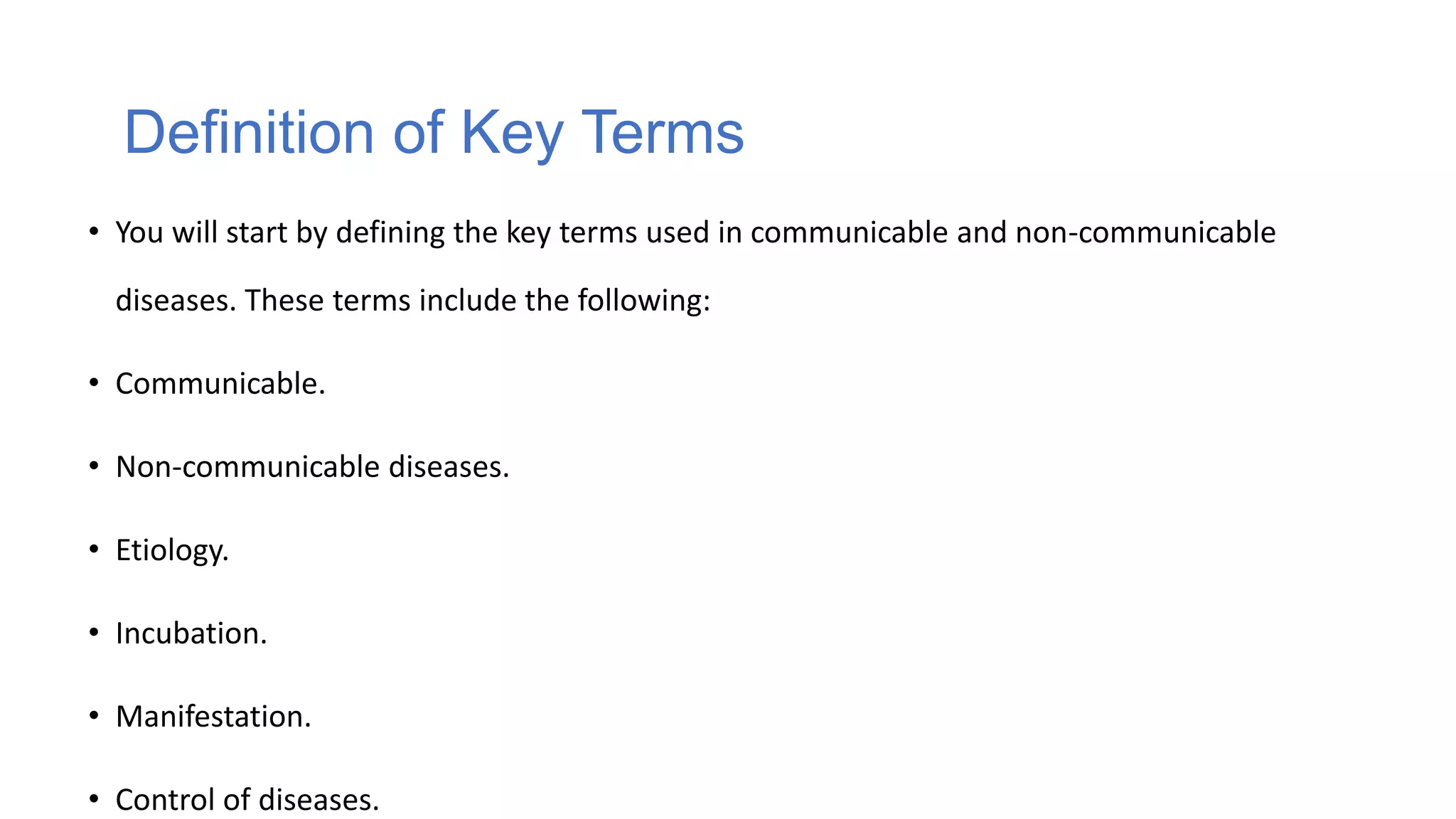The document outlines a module on communicable and non-communicable diseases, structured into three units: definitions and concepts, types of communicable diseases, and types of non-communicable diseases. It discusses key terms, their importance, the means of transmission, as well as prevention methods. The module aims to equip learners with a comprehensive understanding of disease classification, etiology, control, prevention strategies, and examples of both disease types.


























